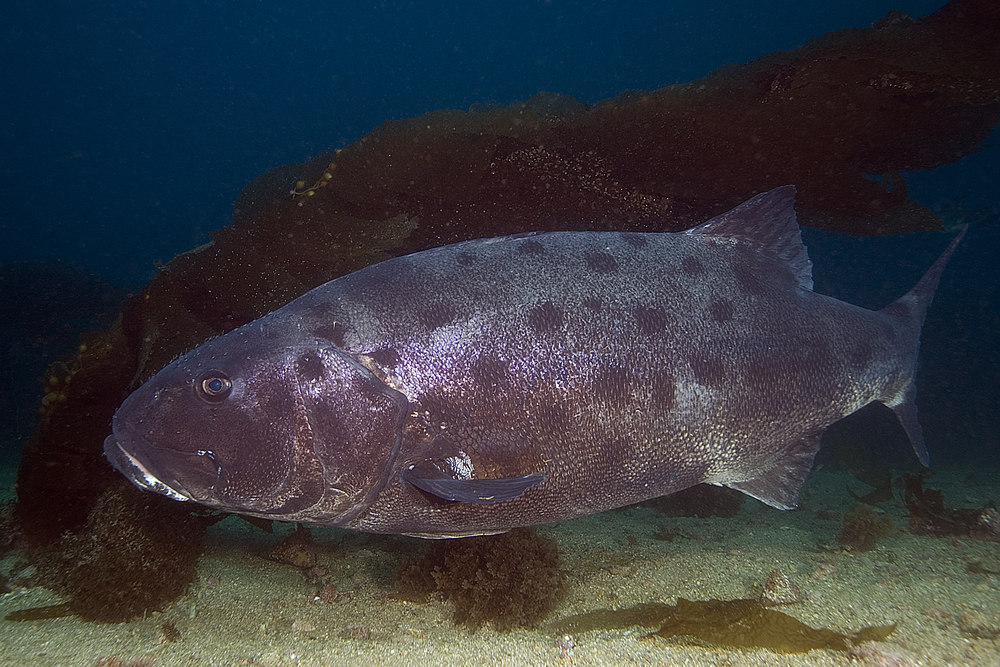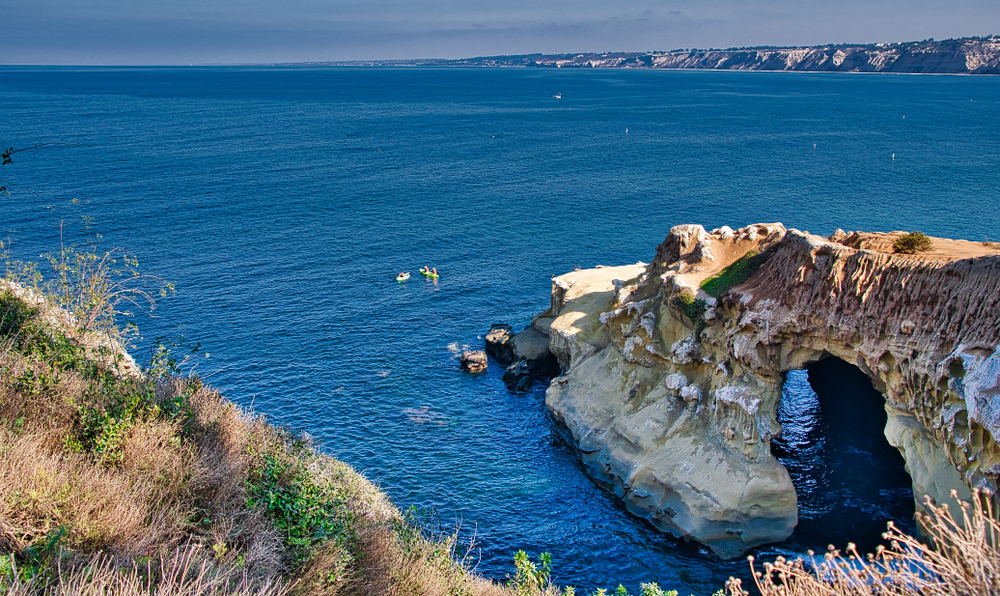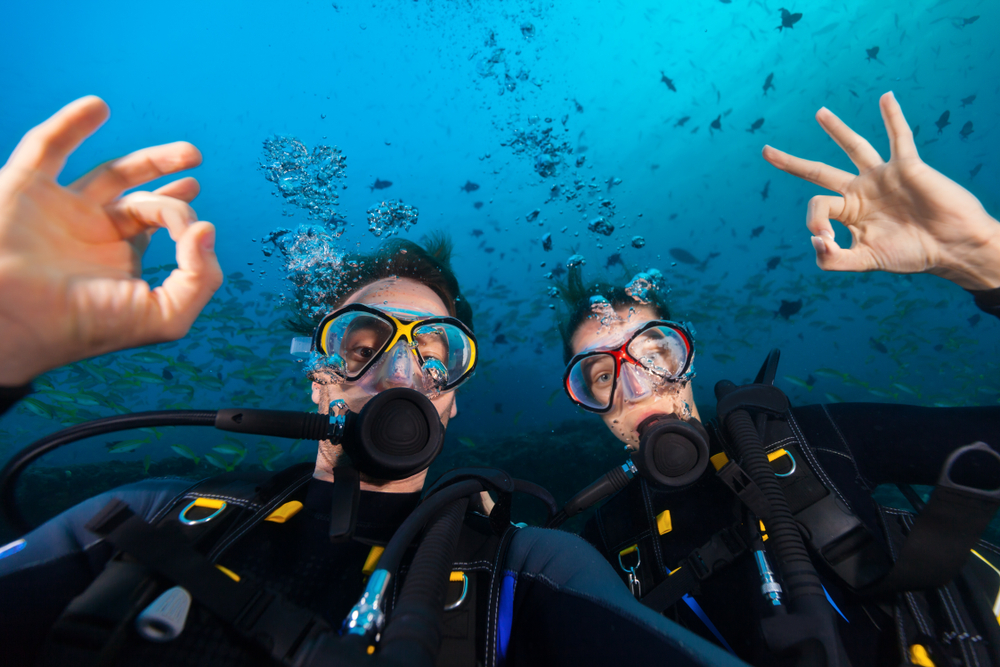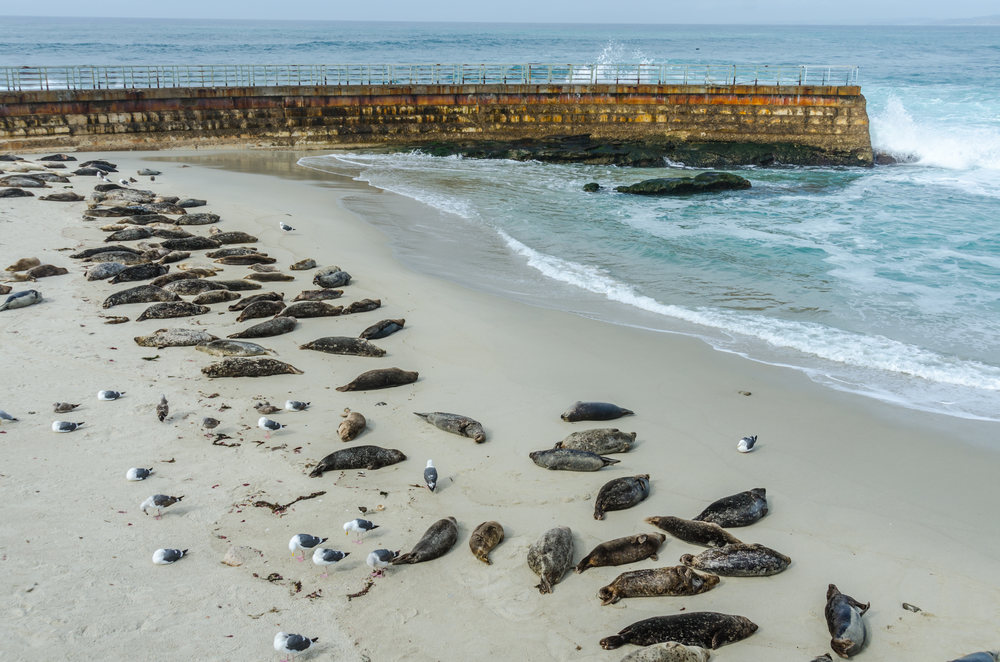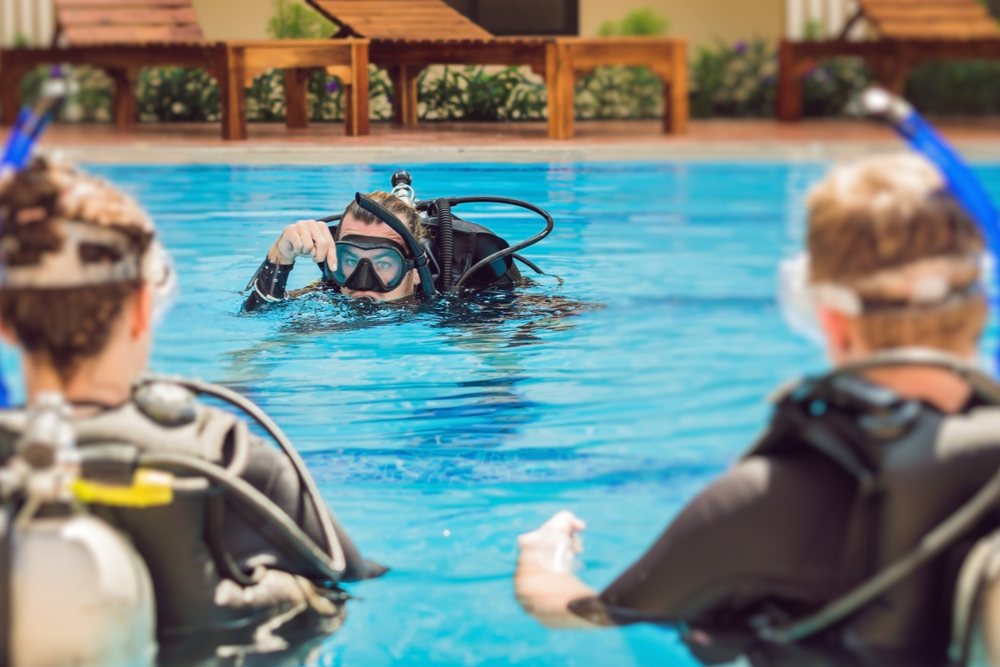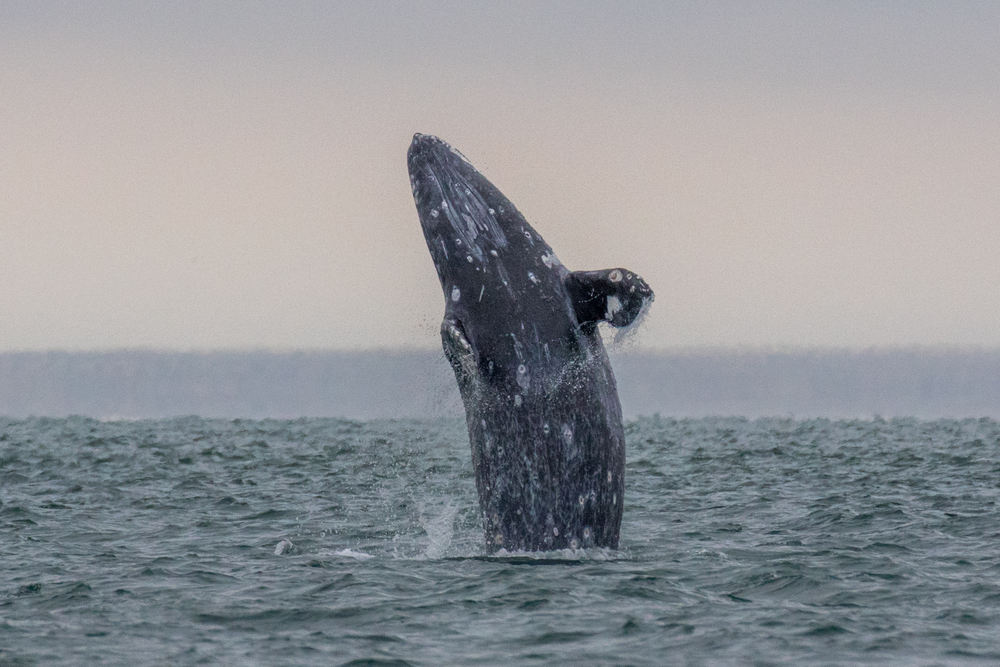One of the most exhilarating encounters you can have while diving at La Jolla Cove is being approached by a giant black sea bass. Also known as GBS, or by their binomial name (Stereolepis gigas), these wreckfish can grow to 8 feet long. This blog will explore several interesting facets of the giant black sea bass at La Jolla Cove.
Characteristics
Giant black sea bass are wreckfish from the Polyprionidae family and are at times mistaken for those in the Serranidae family. GBS have been known to reach 2.5 meters (8.2 feet) in length and are thought to weigh up to 700 lbs. Giants of this size are rare – the majority of GBS spotted within the cove are under 6 feet in length. Their extraordinary size isn’t the only thing that makes them amazing; GBS are also known for their long lifespan.
GBS are believed to reach sexual maturity at between 11-13 years of age (Hawk & Allen, 2014), at a weight upward of 50 lbs. The oldest fish scientifically aged was 75 years old and weighed about 430 pounds (Shultz, 2004), however GBS lore claims they live in excess of 100 years of age.
Juveniles of this species look quite different from their adult form – within their first year they’ll grow from approximately 5 to approximately 17 cm. Orange with white and brown spots in their early stage, they will mature to a dull gray or silver with dark spots which are as distinctive as fingerprints.
Diet
GBS feed on a variety of fish and crustaceans. The wide variety of habitat within the La Jolla reef system provides an amazing menu including: Mackerel, Sheephead, Sand and Kelp bass, Lobster and several varieties of crab. Many unwary spear fisherman has lost their catch to the stealth of the GBS.
GBS feed along the seafloor and within the kelp canopy – their common name (wreckfish) relates to the numerous sightings of the within shipwrecks. As an ambush predator, they lay in wait for unsuspecting prey to venture by – then quickly open their mouths and collect prey like a vacuum cleaner. Despite many small sharp teeth – GBS swallow their prey whole.
Capable of short bursts of speed, these gentle giants prefer the slow doddle while swimming. It is not uncommon to have one or two follow you throughout your entire dive just checking you out.
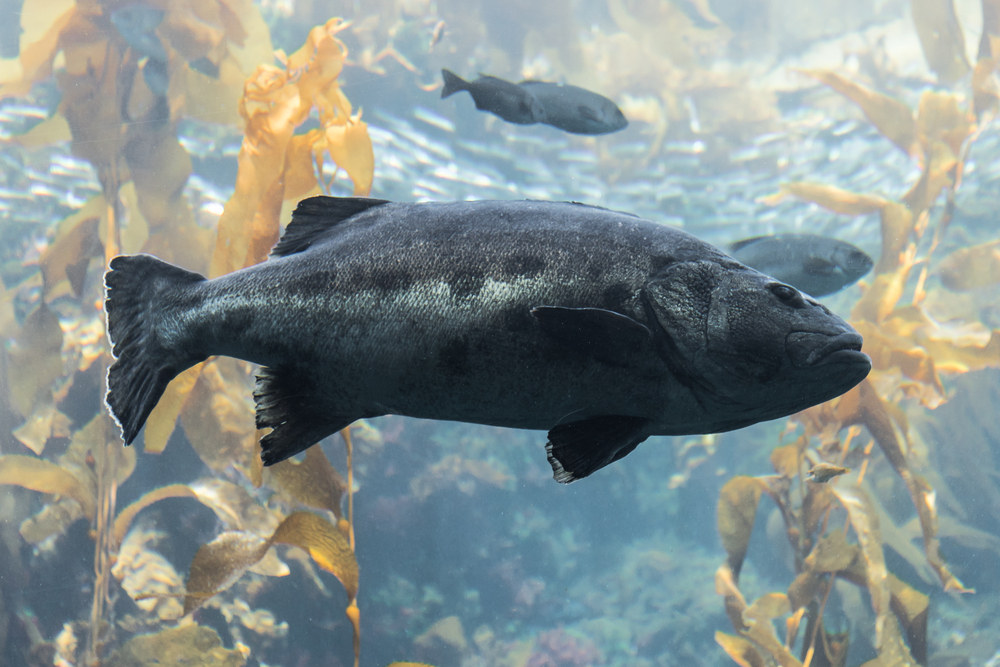
Habitat
The official range for black sea bass is from Baja California to Northern California. It’s rare to see them outside of Southern California or north of Point conception. Juvenile black sea bass are usually seen in the sandy areas of La Jolla and Redondo submarine canyons. The 2-4 inch-long juveniles hover over the sand, remaining in small areas. Adult black sea bass are found in La Jolla Cove.
Fun Facts
- Giant sea bass change color during their lifespan – Adults are usually a grayish-black to brown in color. This coloration is called countershading. Many times they may have dark spots on their sides.
- Almost Hunted to extinction – in 1988 the California legislature passed a law to protect them, and their numbers have begun to increase since then.
- Spawning season is from June to September – adults gather in groups of 2-20 fish.
- Female giant black sea bass may produce up to 60 million eggs.
- Giant Black Sea Bass have only two known predators – They’re so large when fully grown that their only known predators are the great white shark and of course – humans.
- Giant black sea basses have robust bodies and large mouths filled with small teeth. It has a prominent, notched dorsal fin and a broad, flat tail.
Giant Black Sea Bass at La Jolla Cove
The Giant Black Sea Bass is one of the most fascinating sea creatures you will ever encounter. A great way to see one is during a scuba diving adventure at La Jolla Cove. If you’d like to increase your chances of seeing one of these gentle giants…book your next dive with an expert guide who also happens to be a biologist. Give us a call at (619) 415-9426 or visit our website to book a dive today!


